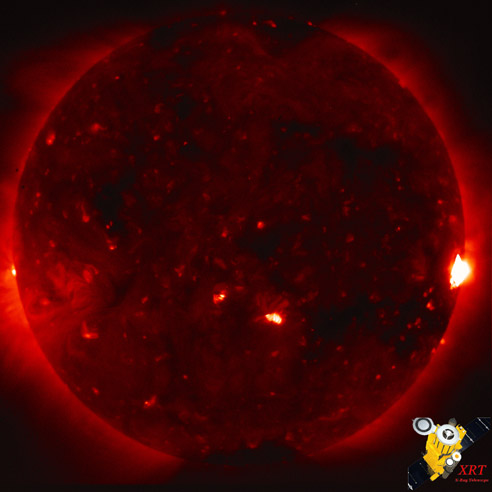Image List
-

The sun's corona glows eerily orange in this image taken on October 28, 2006 by the X-ray Telescope on board the Hinode (formerly Solar-B) spacecraft. The bright region in the inset box shows magnetic fields that have just emerged from the solar interior, producing a new active region. During the current, quiet phase of solar activity (sunspot minimum), the corona is dominated by small regions of closed magnetic field (called X-ray Bright Points) and large dark areas where the magnetic field of the sun extends into interplanetary space (called Coronal Holes).
JAXA/NASA/SAO -

The sun's corona glows eerily orange in this image taken on October 28, 2006 by the X-ray Telescope on board the Hinode (formerly Solar-B) spacecraft. This image is the same as the one above, without the inset box. The bright spot at center right is an overexposure of an active region near the sun's limb.
JAXA/NASA/SAO